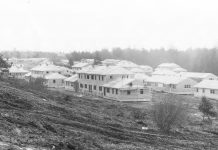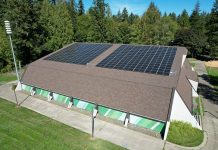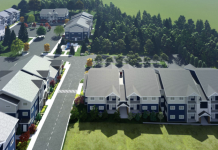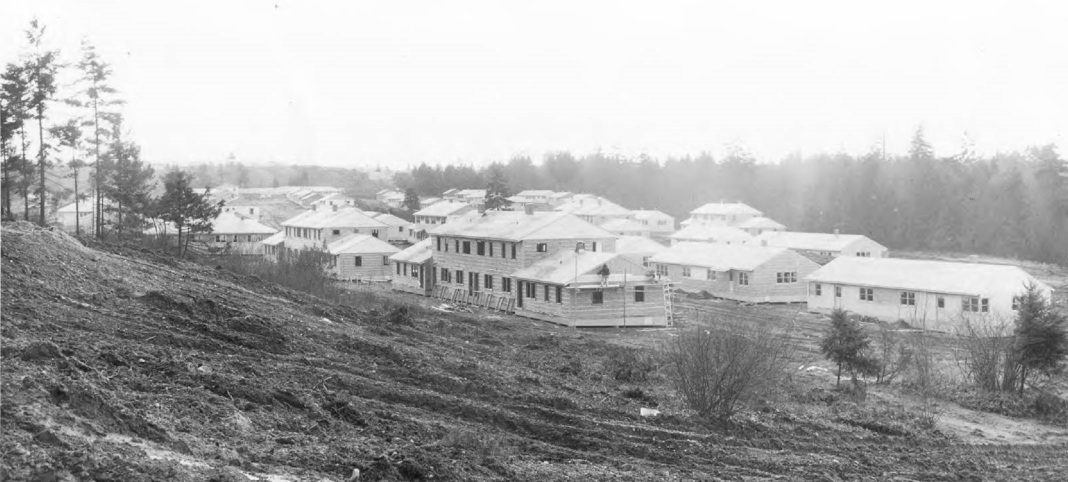World War II brought an unprecedented housing crisis to Tacoma as thousands of workers flocked to the city to work in defense industries, especially the Seattle-Tacoma Shipbuilding Corporation’s shipyards. Workers and their families needed somewhere to live. To help house them, the Tacoma Housing Authority built Salishan in East Tacoma, the city’s first racially integrated neighborhood.

World War II Housing Crisis in Tacoma
Salishan can trace its roots back to the Great Depression. Congress passed the United States Housing Act in 1937, which provided for the creation of local housing authorities to provide “decent, safe, and sanitary dwellings for families” in need.https://www.heritagebanknw.com/home/home
The Tacoma Housing Authority (THA) was formed on August 16, 1940, by the Tacoma City Council. A year later, as the area began preparing for World War II, they decided that the city needed affordable housing for war workers and military personnel.
THA created the Lincoln Heights and American Lake Gardens housing projects but needed an additional (and larger) site. Wanting to direct traffic away from the 11th Street Bridge and downtown, THA considered a site on a hill above the Hylebos Waterway. However, adding utilities proved to be cost-prohibitive.
Developers finally decided on a 465-acre plot east of Portland Avenue, at 40th Street, that could be linked to existing utilities. THA accepted the Public Housing Administration’s proposal for the new project in May 1942. Work soon began.
Salishan was picked as the project’s name in June 1942. The name, suggested by College of Puget Sound librarian Warren Perry, is a generic anthropological term for the Indigenous peoples of Puget Sound. The term Salish is used today.
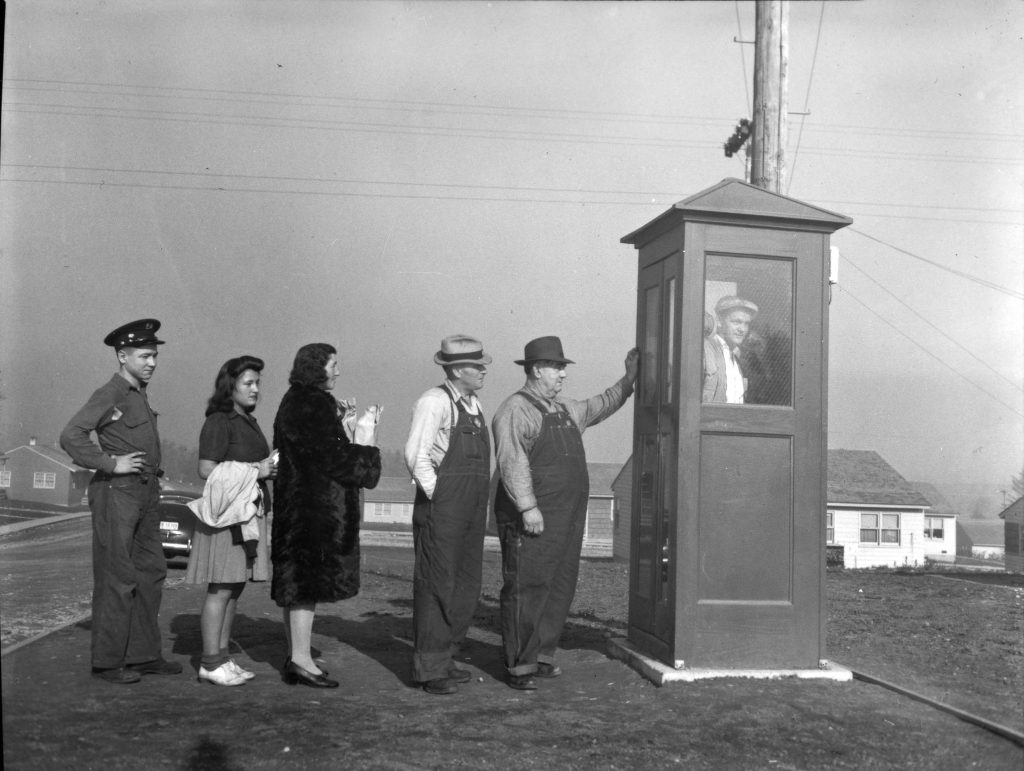
Building East Tacoma’s Salishan Neighborhood
About 30 original property owners were compensated and ordered to vacate. The new “federal city within a city” was designed by Tacoma architects and administered by THA. They planned for 2,000 units. One thousand six hundred of them would be permanent, and the rest would be temporary.
Construction suffered delay after delay. Wartime made labor and materials scarce. Lumber was used from on-site, but wire thefts and a heavy snowstorm caused further delays. The opening was delayed by months due to sewer pipe shortages. This prompted the Navy, who wanted its ships built on time, to consider investigating.
The first ten families arrived on May 1, 1943. Construction work continued. Salishan was finally dedicated on February 20, 1944.
Homes, crowded eight to ten to an acre, were hastily and poorly built despite architects’ promises to build to last. Some even lacked concrete foundations, and 400 had only canvas walls. There were a few single-family homes, but most were duplexes (or even triplexes or fourplexes). THA provided free maintenance and offered free paint, soap, and floor wax to renters who wanted to improve their homes. Landscaping was minimal, but the neighborhood had sweeping views of Commencement Bay and the shipyards.
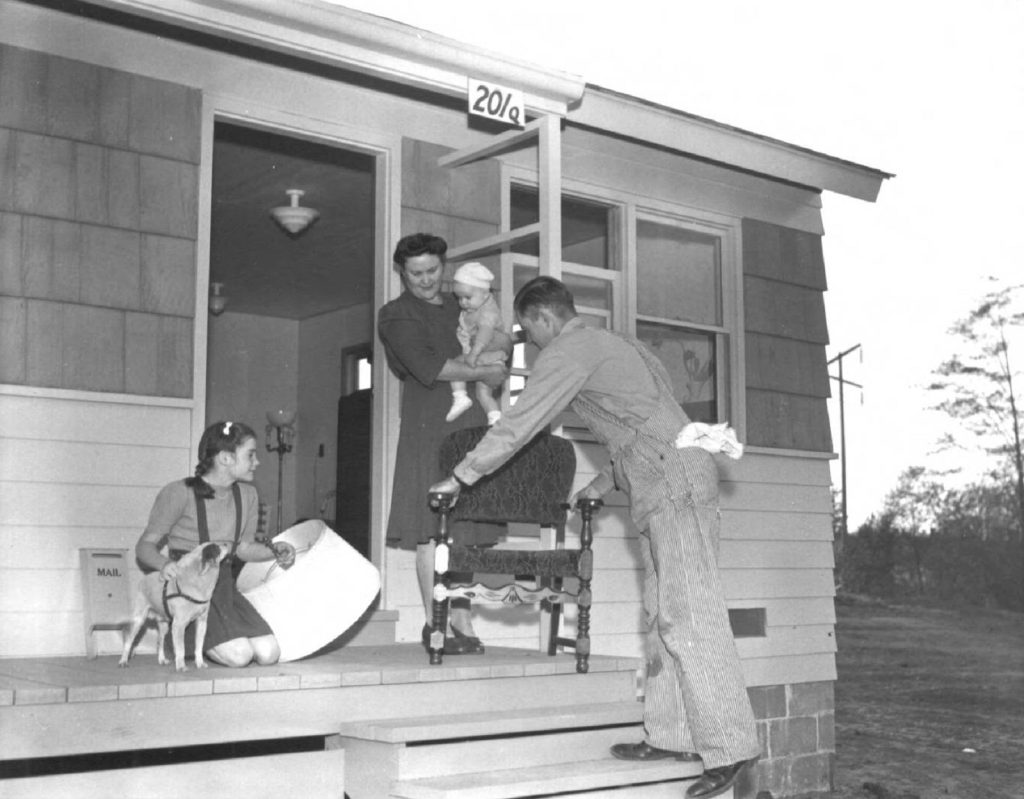
Making Salishan Home in Pierce County
In an era of rampant housing discrimination, Salishan was Tacoma’s first officially racially integrated neighborhood. It was meant to be more than a place for workers to stay, but home. The Federal Housing Authority believed that good housing would improve worker performance and help the war effort. To accomplish this, Salishan offered many community services.
The Salishan Community Council, comprising residents, oversaw services and recreation in the neighborhood. Clubs met at the Community Center building, where people could gather for events, dances, religious services, and movie nights. Salishan sports teams challenged other local teams.
A Baptist chapel was built across the street. Families could shop at Hogan’s Food Center. The store became a Piggly Wiggly after the war and later the Eastside Neighborhood Center.
The neighborhood’s children attended the new Salishan School, administered by the Tacoma School District. However, by December 1944, it was so overcapacity that double sessions and surplus buildings were needed to alleviate overcrowding. The school district also ran a daycare for children of mothers working in the shipyards. It was so crowded that in 1945, a duplex at 114-118 Everett Street was converted into additional daycare space.
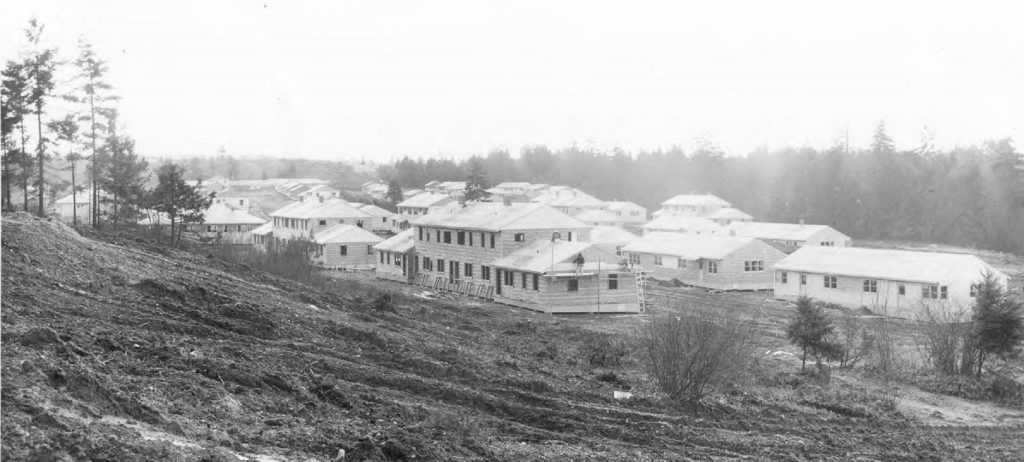
Tacoma’s Peacetime Affordable Housing
By May 1944, Tacoma’s housing crisis had eased, and 800 of Salishan’s units were vacant. Demand actually increased after the war ended in 1945 as veterans returned home. They and their families needed somewhere to live.
Federal laws required that housing projects like Salishan be eventually sold or made into low-income housing. THA considered making Salishan and Lincoln Heights into affordable housing. The Tacoma Real Estate Board opposed the measure, arguing that this would decrease property values and the city’s tax base. In a compromise, THA decided to sell Lincoln Heights and demolished all but 900 of Salishan’s homes in 1951.
By 1950, 6,700 people were living in Salishan, including 3,500 children. The average annual income was below $1,900. By 1955, in one of Tacoma’s most diverse neighborhoods, a third of the residents were people of color. After the fall of Saigon, Salishan welcomed many Southeast Asian refugees.
But by the 1980s, the neighborhood had become infamous for crime. A combination of youth activities, increased security and other measures helped decrease crime by the late 1990s.
However, Salishan itself was decaying. Homes and infrastructure, poorly built in the first place, were deteriorating. With a mix of public and private funding, THA initiated the neighborhood’s rebuilding in 2001.
Completed in 2011, today Salishan is now a mixed-income, mixed-use neighborhood with both affordable and market-rate rentals, single-family homes, commercial buildings, and parks. With its origins as wartime housing for defense workers and decades of providing affordable housing, Salishan continues to offer a place for people to call home.





